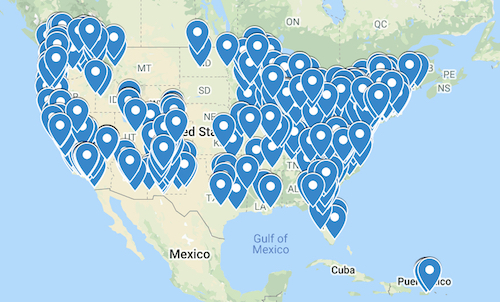Developed by the National Harm Reduction Coalition, the tool enables high-risk individuals to easily access the overdose-reversal medication
By Jenny Diedrich
A new resource developed by the National Harm Reduction Coalition allows opioid users and those around them to access a medication—the overdose-reversal drug naloxone—that could save their lives.
The Naloxone Finder, featuring up-to-date listings of free naloxone programs across the U.S., was designed for people who are likely to witness an overdose but cannot afford the medication or might be conscious of stigma associated with it, says Taeko Frost, senior director of innovation and strategy at the National Harm Reduction Coalition.
The National Harm Reduction Coalition, founded in 1993, advocates for a harm reduction-based approach to treating people who use drugs. The largest organization in the U.S. focused on harm reduction, it provides overdose prevention, syringe access implementation, training, and policy and advocacy muscle.
Naloxone, more commonly known by the brand name Narcan, is an opioid antagonist, meaning it binds to opioid receptors to block the effects of other opioids and restore normal breathing. It can be administered by injection or through a nasal spray.
The Naloxone Finder
Before a program is added to the Naloxone Finder, it is vetted by the National Harm Reduction Coalition. For instance, a program has to provide the medication at no cost. Many also offer additional harm reduction supplies, such as syringes.

When naloxone first started to be more widely used around 2010, people who received it to administer often were required to complete a 30-minute training session about recognizing the signs of an overdose and how to give the medication. The training was a barrier to the people most likely to witness an overdose being willing to ask for naloxone, says Frost, adding, “Longer training doesn’t yield better outcomes.” For programs listed on the Naloxone Finder, instructions typically are provided in a packet or, in the case of the nasal medication, on the box.
Frost says both the injectable and the nasal forms are easy to use: “I have used both on dozens of people. It’s about staying calm and making sure you stay with the person even after administering naloxone.”
A Much-Need Resource
The National Harm Reduction Coalition, which developed the resource over a nine-month period, asked the programs it had vetted to opt in to the tool. The goal was to have a tool that would enable people to stop relying on word of mouth.
Because information can become outdated quickly, Frost says a critical component of the Naloxone Finder is that it’s easily updated. Programs can update their information themselves. Users, meanwhile, can report an issue with the map or any problems they experience receiving naloxone at one of the listed programs.
The value is in making [this resource] public and being unapologetic about developing this for people who use drugs.”—Taeko Frost, National Harm Reduction Coalition
“If somebody is potentially taking a financial or social risk to go get naloxone, we want to make sure they can get it. We also want them to tell us if they didn’t have a good experience or weren’t able to get it. That’s our accountability to people who use drugs. We will take on the labor,” Frost says.
Frost encourages people who are able to use insurance for naloxone to do so. “There is a limited supply of free naloxone,” she says. “This [tool] is for a person who uses drugs and may be nervous to get it at their community pharmacy or is afraid they’re going to have to sit through training. This is not for the teacher who’s teaching a substance use class to learn how to use naloxone. This is specifically designed for someone who uses drugs or is very likely to witness an overdose.”
Frost says the Naloxone Finder is being used by thousands of people per day. “It is the most popular page on our website,” she says. “People are accessing it, and programs are looping back to us and thanking us when a person finds their program because of the website. The value is in making [this resource] public and being unapologetic about developing this for people who use drugs.”














